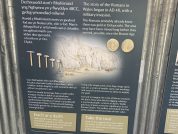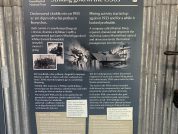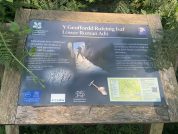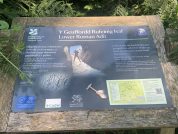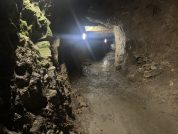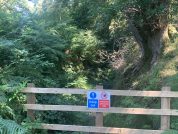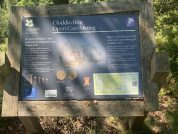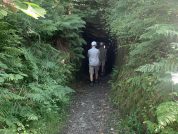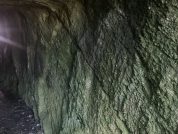Dolaucothi Roman Mine
Gold Mine
Most of the auriferous quartz measures in the Dolaucothi area have been removed by opencast quarrying, but this method also entails the removal of many hundred of tons of the surrounding rock in order to follow the gold-bearing quartz veins into the ground. The Roman method, it seems, was to follow the general direction of the largest veins by cutting upward-sloping tunnels into the hillside with military precision. The highest and most accomplished tunnel is named Ogof y Cawgiau or ‘The Cave of the Bowls’, and still bears the marks of Roman picks and chisels upon its sides and roof. The distinguished antiquarian Mr. Horace Sandars visited the mines in 1910 and his paraphrased report is recorded in the ‘Carmarthen Inventory‘:
Mr. Sandars also deals with the so-called “Roman Adits or Levels” which seemed to be entitled to this name by their bold and regular workmanship. The upper one (Adit A) has a height and breadth of 6 feet, cut very square; it runs straight for almost 60 yards, and then branches right and left.” (RCAHMCWM V, p.29)
Sites near Dolaucothi Roman Mine
- Pumsaint Roman Fort (1 km)
Flavian Auxiliary Fort (AD 69–96) - Pant-teg Uchaf 2 (9 km)
Practice Work - Pant-teg Uchaf 1 (9 km)
Practice Work - Pen Y Gaer, Llandingad (12 km)
Possible Roman Camp - Llandovery (Alabum) Roman Fort (12 km)
Flavian Auxiliary Fort (AD 69–96) - Bremia (Llanio) Roman Fort (16 km)
Flavian Auxiliary Fort (AD 69–96) - Y Pigwn (19 km)
Fortlet, Industry, Marching or Temporary Camp, Milestone and Practice Work - Dynevor Park Roman Fort (19 km)
Auxiliary Fort, Milestone, Temple Or Shrine and Vexillation Fort - Arhosfa'r Garreg-lwyd (19 km)
Marching or Temporary Camp - Beulah Camps (28 km)
Marching or Temporary Camp
